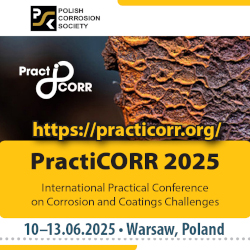Cement composites modified with activated carbon
dr inż. inż. Małgorzata Lenart, Politechnika Krakowska; Wydział Inżynierii Lądowej
ORCID: 0000-0002-0698-4835
dr inż. Maciej Gruszczyński, Politechnika Krakowska; Wydział Inżynierii Lądowej
ORCID: 0000-0002-0445-5745
Adres do korespondencji: Ten adres pocztowy jest chroniony przed spamowaniem. Aby go zobaczyć, konieczne jest włączenie w przeglądarce obsługi JavaScript.
DOI: 10.15199/33.2021.11.01
Oryginalny artykuł naukowy
Streszczenie. Współczesny rozwój cywilizacyjny ma negatywny wpływ na otaczające nas środowisko. Jest to szczególnie zauważalne na terenach zurbanizowanych, gdzie występuje intensywne zanieczyszczenie nie tylko gleby, wody, ale przede wszystkim powietrza. Wśród zanieczyszczeń gazowych należy zwrócić szczególną uwagę na tlenki azotu (popularnie oznaczane jako NOx).W artykule przedstawiono wyniki wstępnych badań laboratoryjnych nad zastosowaniem dodatku węgla aktywnego do modyfikacji kompozytów cementowych. Potwierdziły one korzystne efekty zastosowania tego dodatku w celu zwiększenia efektywności pochłaniania tlenków azotu. Proponowana technologia ma tę przewagę nad cementami z dodatkiem TiO2, że nie wymaga aktywacji promieniowaniem UV. Z tego powodu kompozyty cementowe modyfikowane węglem aktywnym mogą być zastosowane w garażach, przejściach podziemnych czy tunelach.
Słowa kluczowe: zanieczyszczenie powietrza; tlenki azotu; NOx; węgiel aktywny; kompozyty cementowe.
Abstract. Contemporary civilization development has a negative impact on the surrounding environment. It is especially noticeable in urbanized areas where there is intense pollution not only of soil and water, but most of all air. Among the gaseous pollutants, particular attention should be paid to nitrogen oxides (commonly written as NOx). The results of preliminary research on the use of the addition of activated carbon for the modification of cement composites are presented in the article. The obtained results of laboratory tests confirmed the beneficial aspects of using this additive in order to increase the efficiency of nitrogen oxide adsorption by cement composites. The proposed technology complements the hitherto used cements with the addition of TiO2. However, it has the advantage that it does not require activation by UV radiation. Hence, cementitious composites modified with activated carbon can be used in garages, underground passages and tunnels.
Keywords: air pollution; nitrogen oxides; NOx; activated carbon; cement composites.
Literatura
[1] Aiswarya S.,Malvin T.Moses, Lloyd Bennet Thomas, Joel Scaria, Goutham V. Dev. 2019. „Prospective Benefits of UsingActivated Carbon in Cement Composites- An Overview.” International Journal of Advanced Research in Engineering and Technology 10 (3): 289 – 96. https://doi. org/10.34218/IJARET. 10.3.2019.027.
[2] BaciakMichał,KazimierzWarmiński,Agnieszka Bęś. 2018. „The Effect of Selected GaseousAir Pollutants onWoodyPlants.”ForestResearchPapers 76 (4): 401–9. https://doi. org/10.1515/frp-2015-0039.
[3] Guo Ming Zhi, Chi Sun Poon. 2018. „Superior Photocatalytic NOx Removal of Cementitious Materials Prepared with White Cement over Ordinary Portland Cement and the Underlying Mechanisms.” Cement and Concrete Composites 90 (x): 42–49. https://doi.org/10.1016/j.cemconcomp. 2018.03.020.
[4] Horgnies Matthieu, Florence Serre, Isabelle Dubois-Brugger, Ellis Gartner. 2014. „NOx De – Pollution Using Activated Charcoal Concrete – From Laboratory Experiments to Tests with Prototype Garages.” In 4th International Conference on Environmental Pollution and Remediation, 65.1 – 65.8. Prague, Czech Republic.
[5] Jiang Changjia, Shuang Cui, Qing Han, Ping Li, Qikai Zhang, Jianhui Song,Mingrui Li. 2019. „Study on Application of Activated Carbon in Water Treatment.” IOP Conference Series: Earth and Environmental Science 237 (2). https://doi. org/10.1088/1755-1315/237/2/022049.
[6] Jin Q., E. M. Saad, W. Zhang, Y. Tang, K. E. Kurtis. 2019. „Quantification of NOx Uptake in Plain and TiO2-Doped Cementitious Materials.” Cement and Concrete Research 122 (x): 251–56. https://doi.org/10.1016/j.cemconres. 2019.05.010.
[7] Jin Qingxu, Sarah L. Hordern, Yuanzhi Tang, Kimberly E. Kurtis. 2021. „NOx Sequestration by CalciumAluminate Cementitious Materials.” Cement and Concrete Research 142 (x): 106381. https://doi.org/10.1016/j.cemconres. 2021.106381.
[8] KajaA.M., H. J. H. Brouwers, Q. L.Yu. 2019. „NOx Degradation by PhotocatalyticMortars: The Underlying Role of the CH and C-S-H Carbonation.” Cement and Concrete Research 125 (x). https://doi.org/10.1016/j.cemconres.2019.105805.
[9] Krou N. J., I. Batonneau-Gener, T. Belin, S. Mignard, M. Horgnies, I. Dubois-Brugger. 2013. „Mechanisms of NOx Entrapment into Hydrated Cement Paste Containing Activated Carbon – Influences of the Temperature and Carbonation.” Cement and Concrete Research 53 (x): 51–58. https://doi.org/10.1016/j.cemconres. 2013.06.006.
[10] Latza Ute, Silke Gerdes, Xaver Baur. 2009. „Effects of Nitrogen Dioxide on Human Health: Systematic Review of Experimental and Epidemiological Studies Conducted between 2002 and 2006.” International Journal of Hygiene and Environmental Health 212 (3): 271 – 87. https://doi.org/10.1016/j.ijheh.2008.06.003.
[11] Patil B. S., K. S. Kulkarni. 2012. „Development ofHigh SurfaceAreaActivated Carbon from WasteMaterial.” International Journal of Advanced Engineering Research and Studies 1: 109 – 13.
[12] Pérez-Nicolás M., I. Navarro-Blasco, J. M. Fernández, J. I.Alvarez. 2017. „Atmospheric NOx Removal: Study of Cement Mortars with IronandVanadium- Doped TiO2 asVisible Light–Sensitive Photocatalysts.” Construction and Building Materials 149: 257–71. https://doi. org/10.1016/j. conbuildmat. 2017.05.132.
[13] Ramakrishnan Girish, Alexander Orlov. 2014. „Development ofNovel InexpensiveAdsorbents fromWaste Concrete toMitigate NOx Emissions.” Building and Environment 72 (x): 28 – 33. https://doi.org/10.1016/j.buildenv.2013.10.016.
[14] Ramkumar Seshadri S., Utkarsh Sata, Munim Hussain. 2008. „Personnel Protective Fabric Technologies for Chemical Countermeasures.” In Advances in Biological and Chemical Terrorism Countermeasures.
[15] Statistics Poland. 2018. „The State of The Environment in Poland.” Environmental Monitoring Library.Warsaw. 2019. „Environment 2018.” Preliminary Information. Warsaw. 2020. „Environment 2019.” Preliminary Information. Warsaw. „Environment 2020.” Statistical Analyses. Warsaw. https://stat.gov.pl/files/gfx/portalinform a c y j n y / p l / d e f a u l t a k t u a l n o - sci/5484/1/21/1/ochrona_srodowiska_2020.pdf.
[16] Veerakumar Pitchaimani, Pounraj Thanasekaran, Thiruvengadam Subburaj, King-Chuen Lin. 2018. „A Metal-Free Carbon-Based Catalyst: An Overview and Directions for Future Research.” Journal of Carbon Research 4 (4): 54. https://doi. org/10.3390/c4040054.
[17] Wang Zhe, GuangjinWang,Wenyao Li, Zhe Cui, Jianghong Wu, Isil Akpinar, Li Yu, Guanjie He, Junqing Hu. 2021. „LoofahActivated Carbon with Hierarchical Structures for High-Efficiency Adsorption ofMulti-LevelAntibiotic Pollutants.” Applied Surface Science 550 (February). https://doi.org/10.1016/j.apsusc.2021.149313.
Przyjęto do druku: 18.10.2021 r.
Materiały Budowlane 11/2021, strona 3-6 (spis treści >>)
































